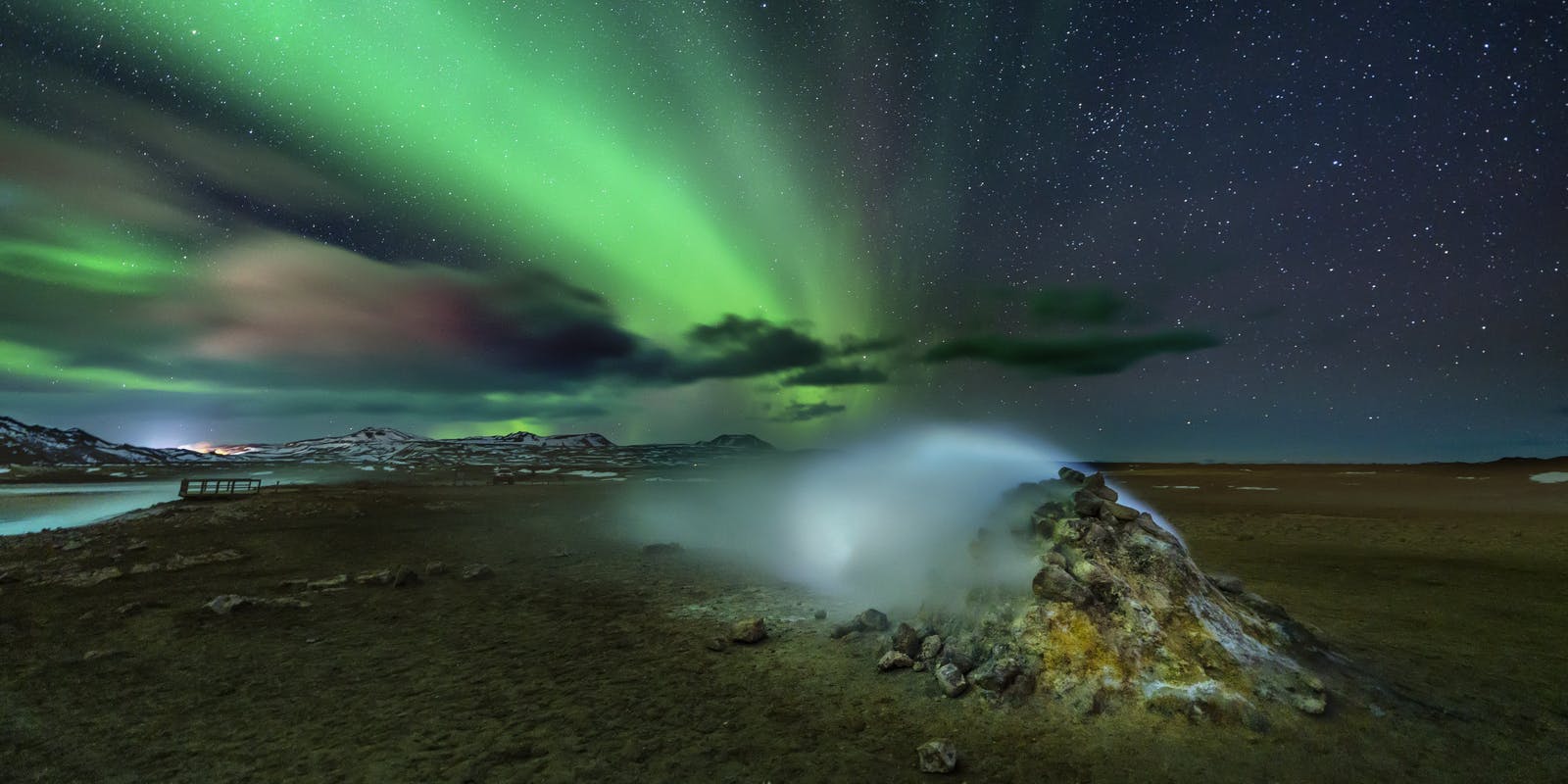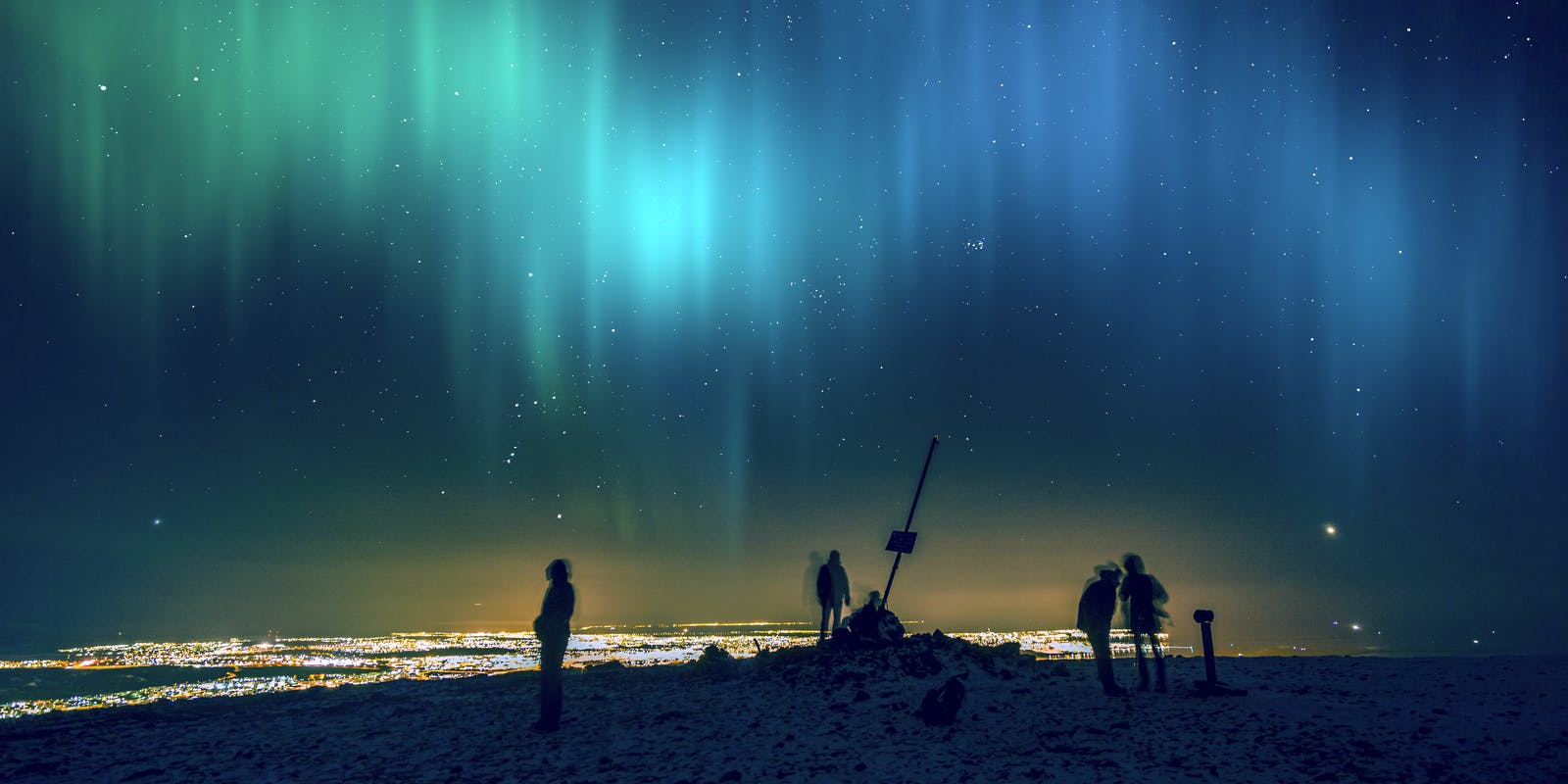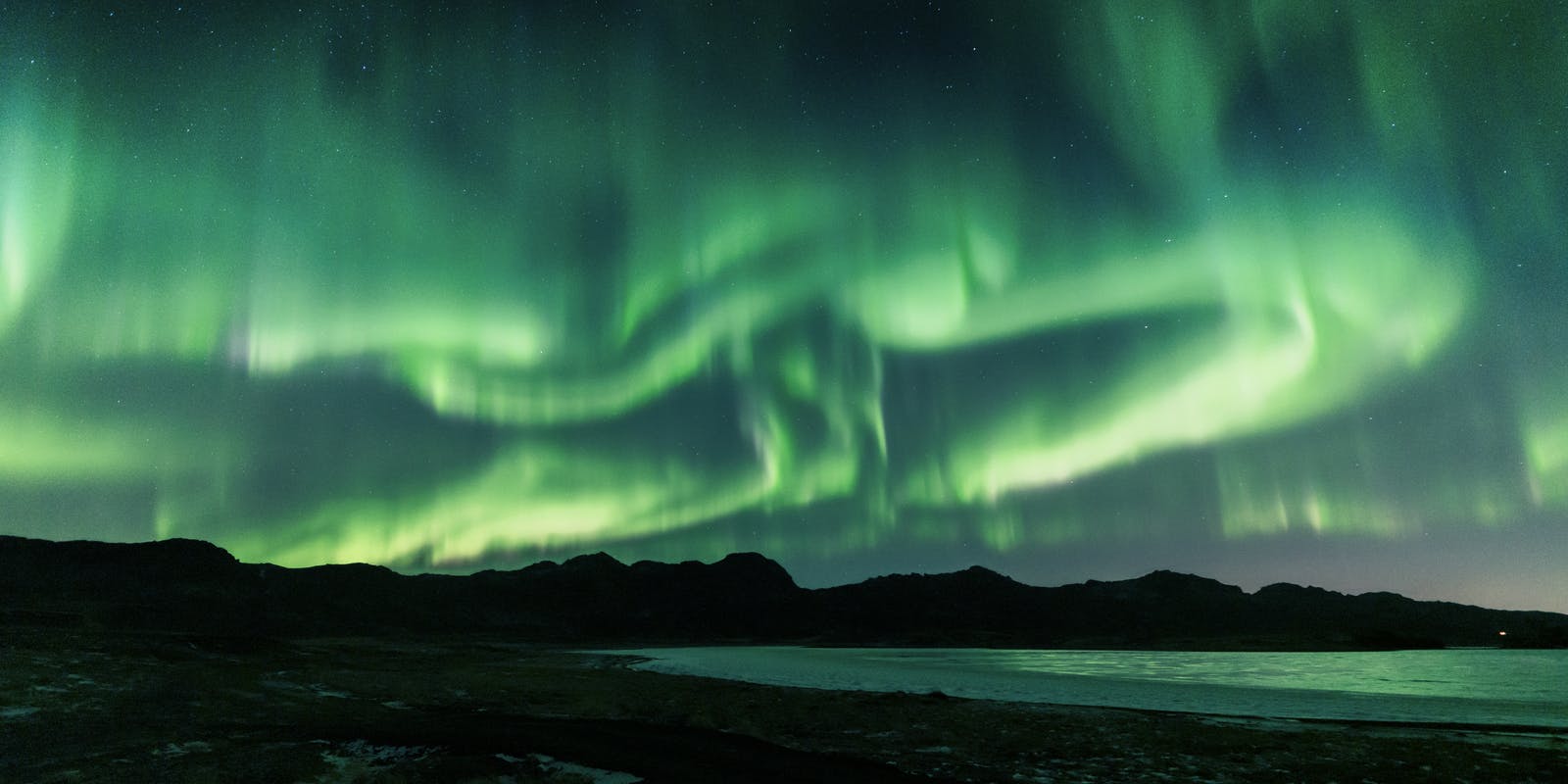
What are the Northern Lights?
The most popular winter attraction in Iceland is the Aurora Borealis (northern lights). Travellers trek to Iceland from around the world to catch a glimpse of the green, violet, and red lights dancing in the night sky. There’s something special about bundling up in your warmest winter gear, trekking outside main towns to avoid bright lights, and hunting for northern lights.
How exactly are the northern lights formed?
The sun constantly emits a stream of charged particles, primarily electrons and protons, known as the solar wind. These particles travel through space and occasionally reach Earth. The Earth has a magnetic field that surrounds it and extends into space. This magnetic field protects our planet from the harmful effects of the solar wind by deflecting most of the charged particles away from the Earth’s surface.
When some of the charged particles from the solar wind manage to enter the Earth’s magnetic field, they follow the magnetic field lines toward the polar regions. As they approach the Earth’s atmosphere near the poles, these charged particles collide with the gases in the atmosphere, primarily oxygen and nitrogen.
These collisions result in the atmosphere’s excitation of oxygen and nitrogen atoms. As the excited atoms return to their normal state, they release the excess energy through light. This light creates beautiful and colourful displays of the northern lights.
When is the Best Time of Year to See Northern Lights in Iceland?

Any month in winter is a good time to see the northern lights, but it comes down to luck. The skies must be clear and dark for the lights to be visible. As you get closer to Iceland‘s midwinter, the nights get longer, and the aurora is easier to see. The conditions have to be right.
Iceland’s dark winter skies are perfect for viewing the Northern Lights, but in 2026, a total solar eclipse will briefly turn daytime into night. The Solar Eclipse 2026 in Iceland will be visible in Reykjavík, making it a must-see event for astronomy enthusiasts.
It’s possible to see the northern lights from late August to early April, but it’s best to visit between early September and April. The night skies will be much darker, improving your chances. If you want an excellent shot at a sighting, travel to Iceland as close to midwinter as possible.
Where is it Possible to See the Northern Lights?
Northern lights can usually be seen between 60 and 75 degrees of latitude, which covers not only Iceland, Norway, Finland, Sweden, Greenland, Russia, the US state of Alaska and parts of Canada. However, it is possible for auroras to be seen in northern US states and northern England and Scotland, although it’s not common.
Dressing for a Northern Lights Search
It’s important to remember that hunting the northern lights can be a waiting game, learn how to pack for Aurora hunting. Expect to spend a long period of time outside, not moving, looking up at the sky. Since you will be standing outside in the cold night, it is essential to choose the proper clothing.
Iceland can be a wet and windy country, so a windproof and waterproof outer layer is a must. Underneath, you should be warmly insulated with a wool sweater or thick fleece. Also, bring along a hat, gloves and scarf. Lastly, waterproof boots and warm socks are vital as the ground could have snow.
How to See the Northern Lights in Reykjavík

It would help if you were away from primary artificial light sources to improve your chances of seeing auroras. This is pretty easy to achieve since most of Iceland is open and sparsely populated.
To guarantee the Northern Lights, go to Perlan’s Show, Áróra. This is a breathtaking film about northern lights. The film includes many stories, combining science and art to create a unique experience for guests. At Perlan, you can learn how northern lights form, hear fascinating tales about them and see fantastic displays. In Icelandic nature and outer space, the northern lights virtually dance around you.
Perlan is home to Iceland’s only planetarium and uses a state-of-the-art 8K projection system and surround sound system to bring you the full spectrum of the magical story of the northern lights.
How Can I Increase my Chances of Seeing Northern Lights in Iceland?
The conditions must be favourable, with no cloud cover and some solar activity. If the aurora forecast is good, it is essential to be far from artificial light sources, such as street lamps; you want to be near open spaces.







